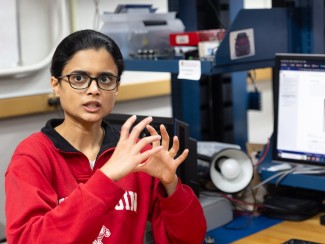March 6, 2017 — I flew into Unalakleet, Alaska, on a late fall day. With about 700 people, Unalakleet is large by rural Alaska standards and serves as a regional hub. The village is located on a sandy spit of land where a clear river meets the turbid water of the Bering Sea. Out the plane window the sun shone bright, glittering off the wind-tossed whitecaps of the sea. To the east, the rolling Nulato Hills, clad in autumn foliage, provided a picturesque backdrop. As the small plane banked for our approach, a row of wind turbines appeared atop a ridge. Installed in 2009 they are among the numerous renewable power installations that have popped up across rural Alaska in the past decade.
In more accessible parts of the planet, renewable energy is often embraced as a tool for reducing the threat of climate change and installed in spite of, rather than due to financial considerations. In Alaska, however, says Piper Foster Wilder, deputy director of the Renewable Energy Alaska Project, or REAP, “Economics, not the environment, are driving the shift to renewables.”
That’s not to say these remote villages in Alaska aren’t dealing with environmental challenges. Of course they are. In fact, the far north is warming at more than twice the rate of the rest of the planet. Permafrost is melting and as the ground thaws, it causes instability beneath the foundations of buildings and oceans and rivers encroach, eroding shorelines. Coastal villages, once protected for much of the year by shore-fast sea ice, are increasingly exposed to storms and flooding as that ice recedes, even causing some communities to begin moving to safer, inland locations.
Wisconsin Energy Institute
Forward in Energy





